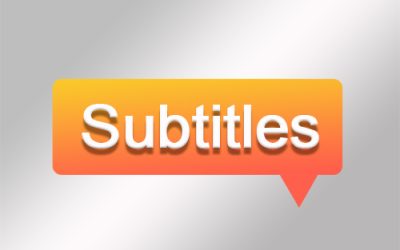One of the many services provided by general transcription companies, closed captioning allows people with hearing loss to enjoy the audio portion of televised programs such as news, public affairs, movies, and sports. Captions have become a necessity in this fast-paced world. Importantly, the Federal Communications Commission (FCC) mandates closed captions to convey news about emergencies and disasters to the deaf and people with hearing impairments. However, North Carolina Health News recently reported that information related to the COVID-19 pandemic is not reaching this community due to inaccurate teleprompter script captioning. Getting this information to them is crucial to keep the hearing impaired, their families, and their fellow citizens safe.
About 15 percent of people in North Carolina report hearing loss. This includes deaf people, those with some hearing loss, and people with hearing and vision loss. According to the report, the state’s health officials realize the importance of reaching out to the deaf and those with hearing loss during this public health emergency, but face many challenges in doing so.
Getting out timely updates about the pandemic is difficult because information is constantly changing. The propagation of misinformation makes things even more difficult. Another problem is that each group with disabilities has different needs – while many people with hearing loss follow the movement of lips and facial expressions, the widespread use of masks limits their ability to follow conversations. Those who are deaf from birth have a limited vocabulary. A recent article in Nature notes that at least 15 different signs are used around the world to designate the coronavirus, which adds to the confusion.
FCC Requirements for Closed Captioning
Closed captions are sets of text within video and television programs that provide a verbatim transcription the dialogue as well as the annotations. Businesses optimize the closed captions in their videos posted online to extend their potential reach and revenues. The government’s rules for closed captioning rules for TV programming are aimed at making the content accessible for individuals who are deaf or have hearing impairments. The FCC’s 2020 rules and requirements for closed caption quality in television programs are as follows:
- Accurate: Captions must match the spoken words in the dialogue and convey background noises and other sounds to the fullest extent possible.
- Synchronous: Captions must coincide with their corresponding spoken words and sounds to the greatest extent possible and must be displayed on the screen at a speed that can be read by viewers.
- Complete: Captions must run from the beginning to the end of the program to the fullest extent possible.
- Properly placed: Captions should not block other important visual content on the screen, overlap one another or run off the edge of the video screen.
Recognizing the greater hurdles involved with captioning live and near-live programming, the rules distinguish between pre-recorded, live, and near-live programming and explain how the standards apply to each type of programming.
Professional Support to meet Captioning Guidelines
North Carolina Health News reports that though officials have instructed that a sign language interpreter should work with television stations to include captions with each update, the captions vary in quality and are not always accurate.
Even internet live streams fail to provide the desired results as the captions included with the news posted online are also not always accurate. The reason, the report notes, is that “many stations generate their captions with a computer program, rather than a trained expert, often without editing to ensure accuracy”. This makes captioning “useless for the most part,” according to Howard A. Rosenblum, CEO of the National Association of the Deaf.
In fact, the solution could lie in having an expert video / audio transcription service provider review and edit the captions automatically generated by Speech Recognition Technology (SRT).
Professional transcription services are available for subtitling and closed captioning requirements. Based on requirements, edited or verbatim captions can be created. While edited captions summarize ideas and abbreviate phrases, verbatim captions include the entire spoken text. While edited captions may be more suitable in the context of children’s programs for ease of reading, people who are deaf or hard-of-hearing generally prefer verbatim texts that convey sounds and words to the fullest extent.
Automated captioning, as already indicated, has several limitations. Software has problems with understanding and transcribing different accents and dialects, picking and transcribing slang, and speech that lacks clarity. Multiple speakers also confuse automated transcription systems. On the other hand, experienced transcriptionists can ensure accurate captioning as they have the ability to recognize and correct mispronounced words, discern speech correctly even with a noisy background, and understand slang. Established outsourcing companies can also provide affordable transcription services for closed captioning that would go a long way in providing timely and accurate information on the health crisis to people who are deaf or hard of hearing.




